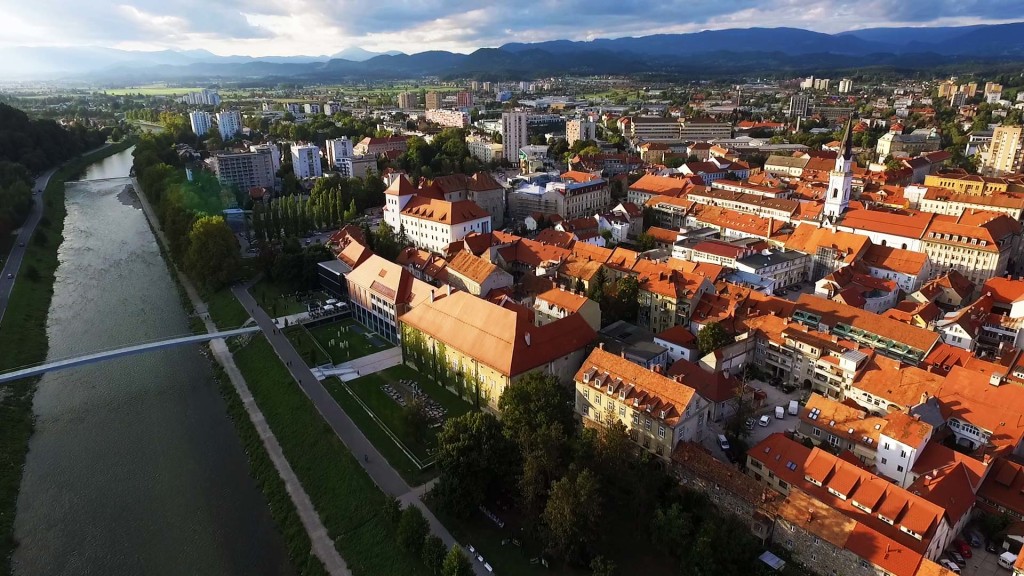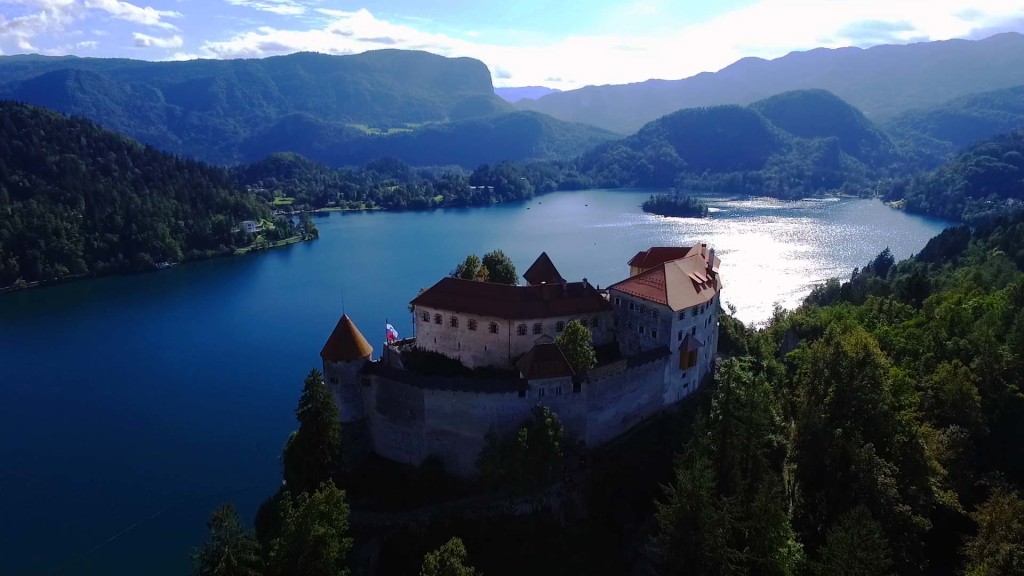The road to Nebesa, a resort in western Slovenia, was cratered for miles together with the kind of potholes that can take down an armored vehicle. By the time I had navigated them, my knuckles felt permanently clenched on the wheel. Through the fog and drizzle, I could see a few cottages that have the silvery, weathered look of abandoned lobster shacks, and glimpsed a set of hulking beasts that can have been bears. Upon closer inspection, after I parked my rental-car, the beasts grown to be two docile Newfoundlands plus the cottages convivially inhabited. Stepping inside largest one, I found myself in a very cozy room illuminated by firelight. Ana Ros was behind the stove, her blonde ringlets opting time as she vigorously stirred a cheese sauce. She spooned it over platefuls of polenta, poured a little estuary of fried pork fat over that, then sprinkled more cheese outrageous. It was the form of dish that creates your arteries flinch only to look at it.
The next morning, I would awake with a surprise: Nebesa had not been the damp, gray enclosure I had taken so that it is but, rather, by far the most breathtaking mountain perch I had experienced. Bright yellow light poured in by way of a window that framed snowcapped alpine peaks straight out of The Sound of Music. That shock failed to compare to your one the evening before, when I ate a spoonful of Ros’s corn-and-buckwheat polenta: The greasy, gloppy looking mush developed into rich and tangy, creamy and crunchy, sweet in the corn and smoky from your pork fat. It was plate-clearingly delicious, which, I would learn, is in fact the norm inside the Republic of Slovenia.
When one ponders traveling for food, Slovenia doesn’t leap to mind, and before I went, I could not name an individual Slovenian dish. I’d heard rumors of any culinary revolution stirring within this Central European country wedged between Italy, Austria, Croatia, and Hungary. But how would I recognize it? I presumed, somewhat accurately, the truth is, the cuisine was heavy on meat, cabbage, and mush. What I didn’t know is the place delicious it might be, particularly when chefs, including Ros, began riffing on those traditional Slovenian themes.
“We didn’t come with an aristocracy in Slovenia—no nobles, no kings. Our history may be the history of peasants,” explained food-and-wine educator and magazine writer Tomaz Srsen over cold-extracted coffee from the modern Café Cokl in Ljubljana, Slovenia’s capital. “There are already other influences—Austrian, Italian, Hungarian, Adriatic—but our traditional cuisine is peasant cuisine.” The problem, he continued, would have been a divide between urban and rural cultures that have cut off Slovenians using their company culinary roots. In the city, diners went set for (mostly mediocre) versions of pizza, Chinese food, as well as other imports, while inside countryside, the original cuisine remained static.
“Now,” Srsen said, “there are some places that are crossing the divide and upgrading the existing dishes with modern techniques. You’ll see.”
A Perfect Prawn
Chandeliers, lace doilies, plus a waiter who insisted on calling me madame forced me to fear the meals at JB Restavracija can be dated. “I i do hope you are not inside a hurry,” said the server for the sedate establishment in downtown Ljubljana. “Here, we go slow.” Yet chef Janez Bratovz’s cooking was vibrant, even zippy, warranting JB’s appearance about the 2010 report on the World’s 100 Best Restaurants. A dish called “shrimp scampi” bore zero relationship for the oil- and garlic-heavy plate of Italian-American renown; it absolutely was instead just one, intensely fresh prawn, caught that morning inside Adriatic and served with just a sauce created from an essence of the own shells. A polenta and cheese dish came topped with acerbic Gorizia radicchio, the bitter tang cutting beautifully with the richness. There was venison with dumplings, but there was clearly also foie gras with black garlic. How—and why—did this fit together? The question put their hands up at other places in Ljubljana, too, including Na Gradu, located inside capital’s medieval castle, where I ate juicy octopus fried to your perfect crunch and served with, of other nutritional foods, strawberries as well as an herbaceous pea puree. Was this modern? Traditional? I couldn’t figure it out.
Global Table
Driving within the Soca Valley, about 40 miles northwest of Ljubljana, I was contemplating the character of borders, the two physical ones that divide countries and also the metaphysical ones that comprise styles. I passed an opaquely turquoise river and spotted cows so white and fluffy it took me a few minutes to register they weren’t sheep. I saw tiny churches with soaring steeples that competed for sky space while using Alps to their rear, and barns that long braids of corn have been left hanging to dry. In a compact, silent town, I followed handpainted signs towards the local cheese maker, to discover him butchering a pig in the garage. At times, it felt like I was driving via a 19th-century landscape instead of an 21st-century one.
But then I had my second dinner with Ana Ros, inside countryside city of Kobarid. Eating her polenta at Nebesa (that’s owned by her parents) have been a special event; her regular gig reaches Hisa Franko, a compact inn that they and her husband, Valter Kramar, inherited from his parents somewhat over a decade ago. At the time, Ros had never worked being a chef. “I hadn’t even set foot in the professional kitchen. And I was pregnant,” she recalls. “But I learned.”
She certainly did. Dinner at Hisa Franko that night am good that it turned out hard to believe she hadn’t spent her early 20s slaving away inside a Michelin-starred galley somewhere. There were bright dandelion greens, just emerged inside springtime sun, which in fact had been picked tomorrow and battered; ramps emulsified into a power green sauce to coat the sweet Slovenian mussels with the oniony earthiness; cod fried having a coating of ash, the pitch black exterior contrasting sharply using the pearly white interior; deer heart served with uni along with roe from marble trout raised a number of kilometers downstream. It was innovative and chic and utterly delicious.
After dinner, I mentioned to Ros that, in Slovenia, I was using a hard time distinguishing involving the old plus the new, the traditional plus the modern. She herself had served tangerine sauce with all the marble trout, and black garlic with all the pork neck. “Look,” she said. “I keep my feet around the ground with my cooking. The base is local, seasonal, Slovenian. But cooking is often about personality, and personality isn’t just that you grow up. It’s also the place you travel, the people who influence you, the experiences you might have. I visited Tanzania when I was 14 and encountered spices with the first time—cloves, cinnamon, cumin. That’s a component of me, too.”
Ros’s absence of dogma by what is authentically of the time and place was refreshing. As I tripped the next morning, I thought about something she had said ahead of heading upstairs to bed: “You might be creative only after you’ve put in the lot of kilometers.”
Lakeside Idyll
Driving east from Kobarid through mountain passages, I located Lake Bled, among Slovenia’s most instantly recognizable spots. The lake—deeply blue and in the middle of more of those snowcapped peaks—is dominated by the church that sits by using an island rolling around in its center. To get for the town, you should take a wooden boat known as the pletna, navigated by oarsmen whose to ferry passengers there is first granted by Empress Maria Theresa inside the 18th century and it has been died, one generation to another, from the time that. It’s ridiculously picturesque, so long as you keep your eyes around the lake and mountains and away on the tacky souvenir shops, mini-golf courses, and Soviet-style hotels across the perimeter.
Most from the restaurant menus I perused in Bled were heavy on game meats and dumplings, but at Garden Village—a new eco-resort with luxury tree houses and tents, a self-cleaning pool area, and electric car-charging stations—something else was afoot. The restaurant’s tables were topped with plush squares of living grass, as well as its room dividers were planters of herbs, setting up a greenhouse feel. The fare was Slovenian standards given novel twists. Smoked trout, a normal appetizer, came prepared three ways: in a very creamy pâté; layered in thin, glistening slices; and rolled in nori, sushi style. Thick, homemade ravioli were stuffed not with all the cottage cheese so familiar elsewhere in Slovenia but which has a smoky white bean puree, and were served in a very kicky sauce with vegetables that retained their pleasing crunch. Meeting chef Dusan Jovanovic, I discovered that he had joined your home a mere week before I arrived, his previous position that surrounding private chef for the government official. I asked him if his food was Slovenian. He was shy and clearly preferred to permit his cooking perform talking. Finally, he simply smiled and said, “Think globally, act locally.”
Breakfast of Champions
I ate my last meal in Slovenia at Vila Podvin, a classy restaurant about the grounds of the former castle about the outskirts of Lake Bled. Chef Uros Stefelin holds a weekly farmers’ market which is working to recover heirloom varieties for example the powerfully sweet and seedy tepka pear. In his dining-room, he brings tradition forward together with his food, at the same time: sturgeon served with wild garlic and hops and also a gingery foam; dandelion soup drizzled with pumpkin oil. “My dishes must taste like they might have a one hundred year ago,” Stefelin explained. “I don’t need to change the flavor in our ingredients. But the combination—how you placed them together—that’s in which the creativity lies.”
The proof was inside the polenta. Lunch at Vila Podvin started with a tiny bowl of raw polenta topped by the centimeter-high disk which was brown within the outside, white about the inside. For a moment, I wasn’t sure the way to eat it. Did I pick-up the disk and require a bite? Cut it into smaller pieces? Surely I wasn’t intended to roll it from the uncooked grain? Fortunately, the waiter intervened. “Is Slovenian breakfast!” he beamed, and I pointed out that what I was taking a look at was an egg, the very best third shaved off, the remaining buried inside the polenta. I dipped my spoon involved with it and tasted sweet cornmeal, rich egg, and crisp, bacony waste fried pork fat. I had savored that specific combination before around my travels through Slovenia, but this version was more refined, more delicate. The thrill of discovery ran through me.
“If you need a revolution, you’ve got to lay the groundwork,” Ros had laughed and said at Hisa Franko. “In Denmark, that they that once René Redzepi arrived,” she said, referring on the chef at Noma, currently ranked best restaurant within the world. “We don’t are yet.” Ros and food writer Tomaz Srsen played on the notion of their country becoming the following big culinary destination. But I was required to wonder, is visiting Slovenia now prefer that time you traveled to Copenhagen hoping for the decent smørrebrød and discovered Noma’s fried reindeer lichen and musk ox tartare? Or when you went along to Spain looking to eat gazpacho and paella but found yourself at elBulli about the Catalan coast being served spherified olives and liquid-nitrogenized cotton candy? If a food revolution comes, doesn’t it look like a number of inspired individuals, sparsely scattered about the country, doing very delicious things?


